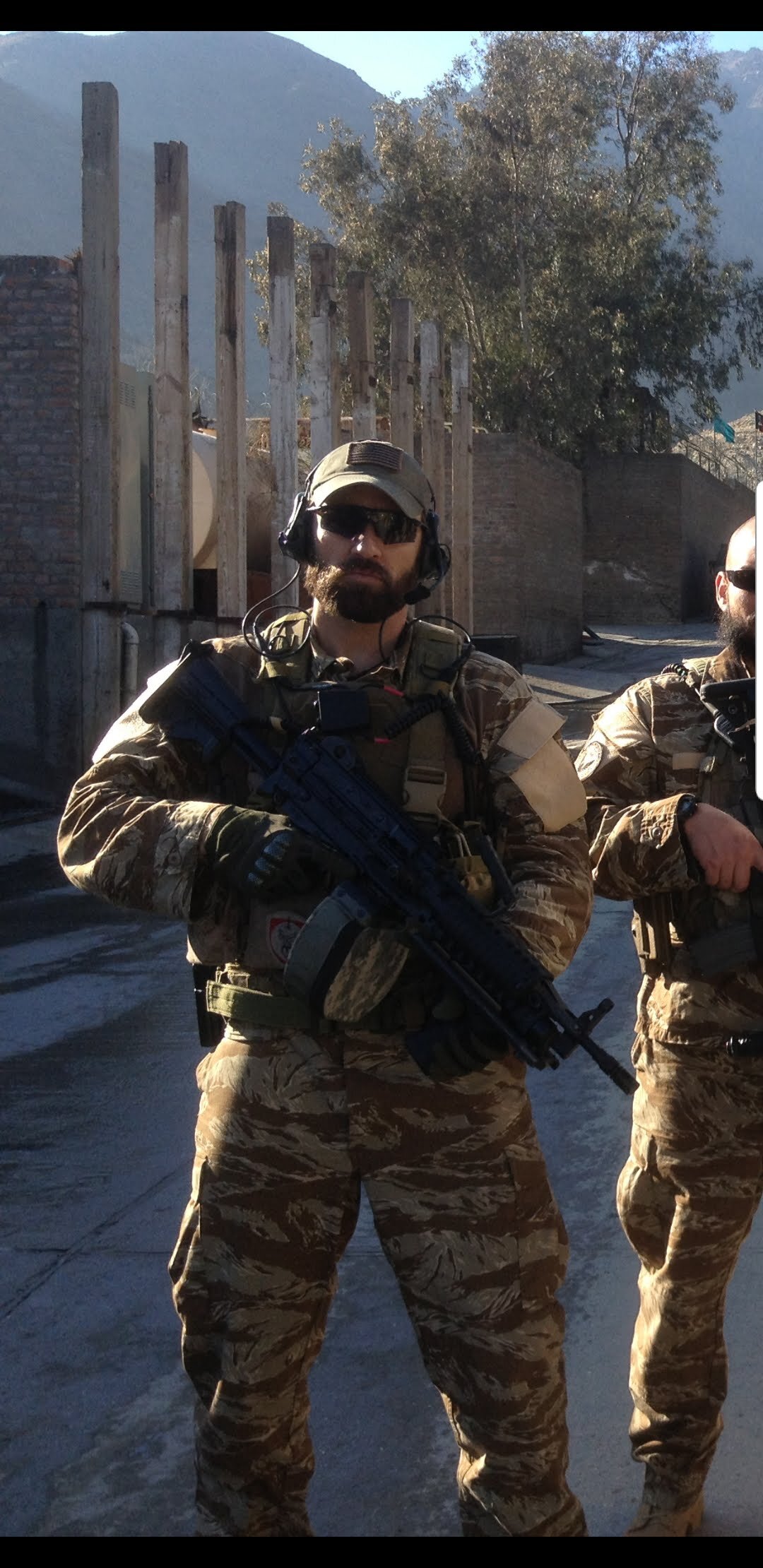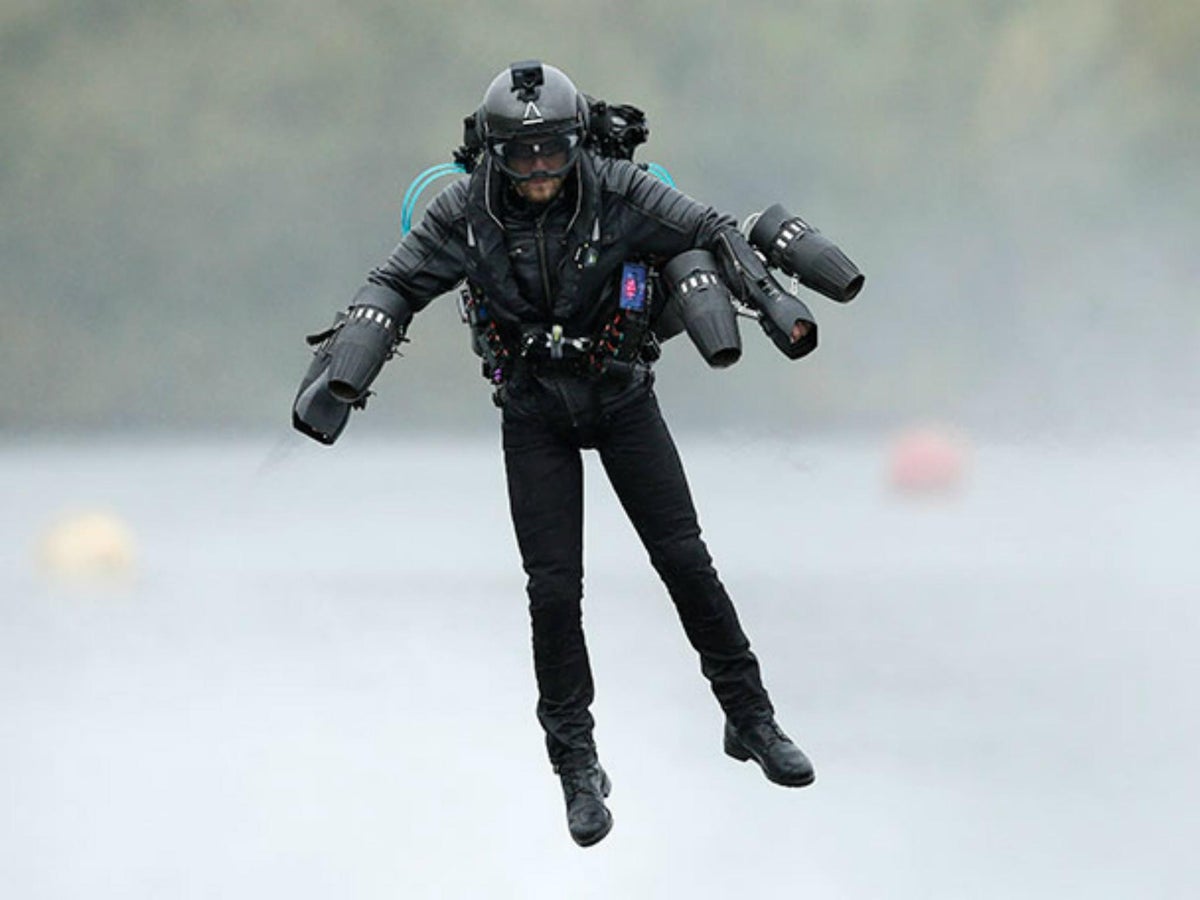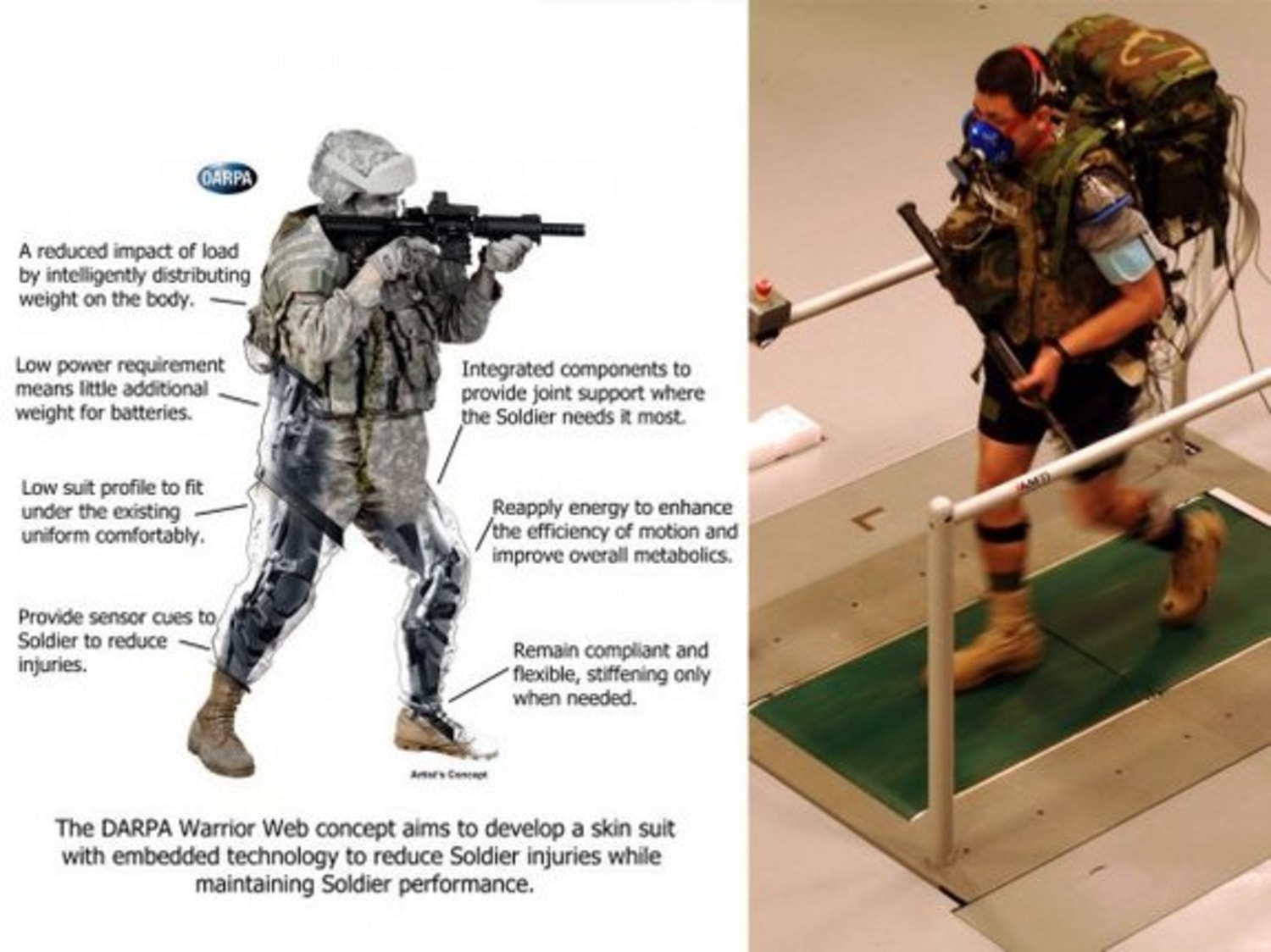Ironman Project Military - Although stories of fortified soldiers span centuries in Western literature, the modern idea of fortified weapons became a permanent fixture in the military imagination when Robert Heinlein introduced it. Introduce the world to the semi-fascist future of interplanetary warfare with The Spacecraft Troops in 1959. A staple of nearly every official U.S. military reading list.
The opening pages of Heinlein's classic introduce the soldier of the future as a one-man, jet-assisted army that breaks through enemy lines and confines in an exoskeleton. armored reminiscent of "a giant steel gorilla armed with gorilla-sized arms."
Ironman Project Military
 Source: images.squarespace-cdn.com
Source: images.squarespace-cdn.com
Tanks and warships require extraordinary skill to maneuver, Heinlein writes, but the elegant appeal of power armor for the military of the future is that "you don't have to operate the armor; you wear it like pants.
The Carnivore Project
clothes, like clothes, like leather." According to SOCOM, the exoskeleton from the past is the ghost of the TALOS program. helmet, power, and suit communications to work together. There's a level of pre-staged connectivity. It comes with a lot of complex systems that overlap, and these individual systems have to really work together for the suit to achieve the human-machine fusion that Heinlein wants.
envisioned almost half a century ago. Even with advances in computing and miniaturization, TALOS still has many different parts to work with. According to Beck, armor The big problem with the versions is that any breakdown in the suit that requires energy to move can immobilize a soldier.
Obviously this is a pretty bad position in a fight. As Beck notes, work continues and many advances in technology filter into civilian life. Beck further claims that the military has been studying it for a long time;
Initially, he was tasked with a project called 'Predator', although now many people are involved in the process, at first he only worked with a few other people know about it. For example, a soldier must carry a 35-pound generator, water, ammunition, weapons, and communication equipment, greatly affecting mission time and military effectiveness.
Joe Rogan Still Believes Guns Are Necessary To Stop Totalitarian Government Control
The Army has made various attempts to "offload" soldiers over the years. The engineering results of the five-year TALOS effort have come closer to producing a suit of armor than any previous effort in Pentagon history.
 Source: static.independent.co.uk
Source: static.independent.co.uk
The program received about 10 "mature" subsystems: among them, advanced new armor, an augmented reality display on the head, and an exoskeleton in the lower body designed to significantly reduce Describe leg and back fatigue. By many measures, the result was a revolutionary step towards standard armor.
He added: “The whole history of technology and war, whether it was the first stone more powerful than the first sandals that the Assyrians used to move faster and faster, has always been towards human performance enhancement”.
Peter Singer, a member of the New America Foundation and author of the novel Ghost Fleet. The military calls this distinctive, Czech-inspired suit the Tactical Assault Light Operational Suit, or TALOS for short. To the press, it was colloquially known as the "Iron Man" suit.
From Talos To Talos
It was the hottest topic in defense circles — until the project was abruptly shut down in 2019. That doesn't mean the lawsuit was a total failure: As Hawkins told me, the subsystem maturations produced by JATF-TALOS will almost certainly have a potential adoption program elsewhere in the US military.
Indeed, armor in particular is one of its most promising mature subsystems: made of ultra-high molecular weight polyethylene—a material that is lighter but stronger than standard armor plates—it currently being tested in the field by SOF units in the army.
That means better protection for people coming to the door like Czechs, like the TALOS program was introduced in the first place. The built-in 'Iron Man' suit may be dead, but its replacements will likely survive other Pentagon programs - and, if perfected in the coming years, could actually be.
achieving the original goal of better survivability of the TALOS program. in another form. That same year, the Office of Naval Research Grants allowed Cornell University engineer Neil Mizen to develop his so-called "man amplifier" exoskeleton.
 Source: media-cldnry.s-nbcnews.com
Source: media-cldnry.s-nbcnews.com
Built around a series of actuators controlled via "bilateral force feedback," according to Popular Science, Mizen's suit - a frame of messy, patchy gray engines - is claims to be able to lift up to 1,000 pounds, making it ideal for handling weapons and heavy luggage.
. across the hotel industry. Of course, the Navy is particularly interested in "Superman suits" as popular science calls them, "to help sailors deal with torpedoes, bombs, and machinery in areas aboard ships and submarines. "
However, DARPA wanted a personal airborne system that could fit in a pocket or box and be ready to go after 10 minutes of assembly. The system can fly at low to medium altitudes and has a range of 5 km (3.1 mi).
TALOS not only provides protection but also enhances combat ability allowing soldiers to run faster, longer and tirelessly. The suit makes it possible for him to lift heavy objects and hold them for long periods of time.
All of this is made possible thanks to a futuristic exoskeleton anchored at the back and running down the operator's legs and arms. Indeed, the Pitman "armor" exoskeleton concept proved so technically unfeasible that it fell out of favor with military planners after the Army quickly stood up and abandoned an attempt.
built another power armor at Aberdeen Proving Ground in the early 1990s. It wasn't until Czech's death that the Pentagon returned to the idea of a ready-to-wear suit. (And if these projects appear to be duplicates, that's because of them: As a SOCOM spokesperson explained, "Someone comes in and picks up research and adds to it and then it gets left behind because
for any reason until someone else comes to claim it.) On December 8, 2012, members of the United States Navy's Special Warfare Development Group, known as SEAL Team 6, were deployed. in a dangerous nighttime raid with one simple goal: rescue a civilian doctor from the clutches of the Taliban. . The Fortis is built with a tailored upper that operates on an attached belt
 Source: popularairsoft.com
Source: popularairsoft.com
The belt connects to flexible hip sensors throughout the system These sensors tell the computer the soldier's position in space, along with movement and movement. The first of the powered armor concept emerged in the 1980s. Developed by Jeff Moore of the Los Alamos National Laboratory's Advanced Weapons Technology Group, the "P Suit"
ittman" cocoons the operator with 500 pounds of fiberglass and ceramic armor to provide "special force enhancement for low-intensity conflict and counterterrorism." A kick in the door will result in a downfall. of the Czech Republic decades later.
Powered by brain structures rather than a physical mechanism, the suit proved a far-fetched engineering dream, its core functions unattainable by the technology of the time. Tactical Assault Light Operator Suite, or TALOS, developed by engineers at MIT;
United States Army Research, Development, and Engineering Command (RDECOM); and researchers at other business and academic institutions. Military.com reports that prototypes of the suit, which is designed to protect against bullets and equipped with a variety of sensors and cameras, are being assembled and could be ready for military testing in June.
"It reduces the risk of musculoskeletal injuries. We view Soldiers as a personal ecosystem. We look at not only what they can't do now, but also the challenges they will face in the future. 20 years from now," Sharps said.
Weapons are also next generation with a special fluid system as a main part. If you've ever mixed corn and water, you'll get an idea of how this armor design works. The liquid remains in a low density state until impact.
Then it hardens instantly, stops firing. The suit is said to come with a host of other features to enhance comfort and gather health information. Originally named 'Carnivore', the Army's attempt to equip its soldiers with power armor is now known as Project TALOS, which stands for Tactical Assault Light Operator Suit.
 Source: oversixtydev.blob.core.windows.net
Source: oversixtydev.blob.core.windows.net
Initial brainstorming sessions for the project included a 1000-pound set of comic book-style armor powered by a soccer ball-sized portable nuclear battery. The TALOS project currently focuses on exoskeletons that help soldiers carry large loads without injury.
The US Special Operations Command's current TALOS effort is working with a variety of industrial, military, and academic experts on a plan to build early exoskeleton prototypes within a day or two. next year. This long-term CERDEC effort is something that could easily be merged or integrated, with some of these exoskeletons being built right now.
Paul Crespo is the managing editor of US Defense News. A defense and national security expert, he served as a Marine Corps officer and military attaché at U.S. embassies worldwide in the Defense Intelligence Agency (DIA).
Paul holds degrees from Georgetown, London and Cambridge Universities. He is also the CEO of the security consulting firm Specter Global Risk and the president of the Center for Defense Studies, a national security research organization.
- paulcrespo.substack.com - PAULCRESPO.COM The first prototype of a high-tech armor that gives soldiers superhuman abilities could be ready for testing this summer, according to top military officials. The suit's equivalent of Marvel Comics superhero "Iron Man" could be delivered to task forces as early as June. Jared Keller is the managing editor of Action and Purpose.
His writing has appeared in Aeon, The Los Angeles Review of Books, The New Republic, Pacific Standard, Smithsonian, and The Washington Post, among other publications. Contact the author here. "As you move, you bounce up and down and the speed of movement is an inverted pendulum. If you take each step thousands of times, that's all the energy you're expending," said Julian Douglas, mechanical engineer
gas at CERDEC, tell Warrior Maven. The TALOS design includes internal heating and cooling with adaptive temperature control based on the operator's environment. This means that a soldier in a suit can maintain a lower body temperature during operations in a desert environment, thereby reducing his fatigue.
 Source: static.wikia.nocookie.net
Source: static.wikia.nocookie.net
In addition, heat can ensure that joints do not become stiff or inflamed from cold temperatures. In addition to internal temperature control, TALOS introduces real-time health monitoring for both operators and observers. These include heart rate, stress, and trauma.
Along with real-time health monitoring, gauze can be managed by the already mentioned suit as part of this system, but it's unclear how that will work. Surprised Joe Rogan asked the former Navy SEAL about the materials used to make these suits.
Beck replied that the suit would have a durable material that would be able to withstand bumps and shocks in a war zone. She says it will feature carbon fiber, titanium and other high-quality materials. "The design for the exoskeleton captures energy to meet the needs of soldiers dismounting. The system can draw energy from the soldier's movements as they move around," said Dr.
Nathan Sharps, mechanical engineer, Army Electronics-Communications Research, Development and Engineering Center (CERDEC) told Warrior Maven in an interview. In fact, exoskeletons have been used in a number of different ways in other industries. For example, construction and automotive industry leaders have considered the use of exoskeletons.
केहीले यसका कारण सेना पहिले नै विकासको फाइन ट्युनिङ चरणमा भन्ने सोचेका थिए थिए थिए थिए केही अधिकारीहरूले यो यो सूट २०२६ सम्म र कार्यात्मक नहुने गरे।।। , "यो Exo , "उनले जवाफ "यदि ? ?
? ? " "सञ्चालकहरूका ," , "त्यो , " (DARPA) "पोर्टेबल " "जेटप्याकहरू -व्यक्ति " , नोटहरू पपुलर (PM)। "हामी TALOS डिजाइन मुख्य रूपमा पोइन्टम्यानलाई ध्यानमा राखेर गरिएको थियो। TAL "आइरन " विकास गरेको , "सर्वो " TALOS
पेन्टागनको मेकानाइज्ड सुपर सिपाहीको दर्शनलाई वास्तविकता छुरा।
ironman project us military, iron man military suit, us military iron man suit, us iron man suit, talos armor project, talos suit military, us army talos suit, us army iron man suit